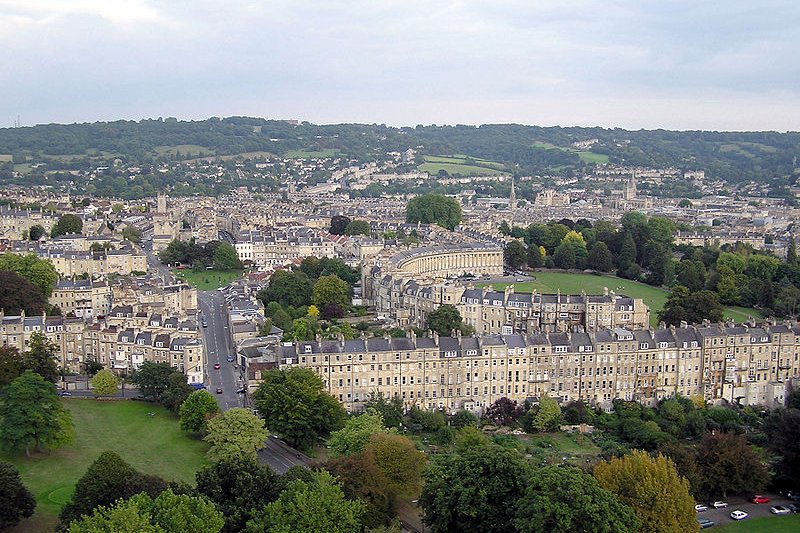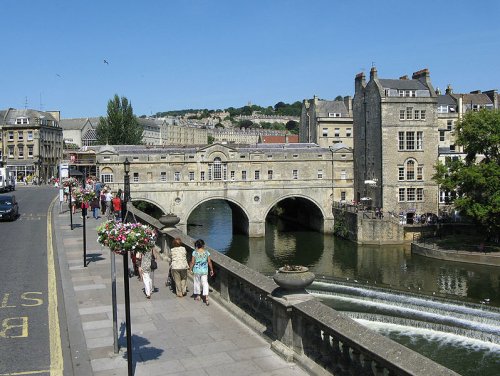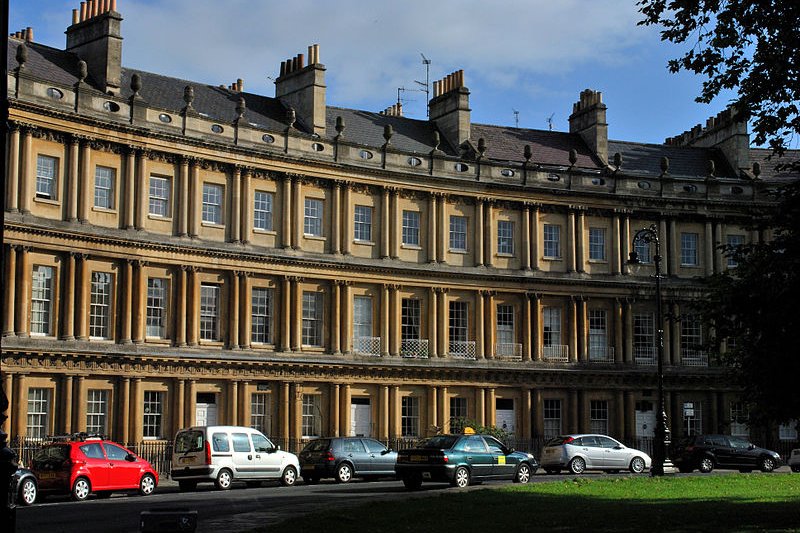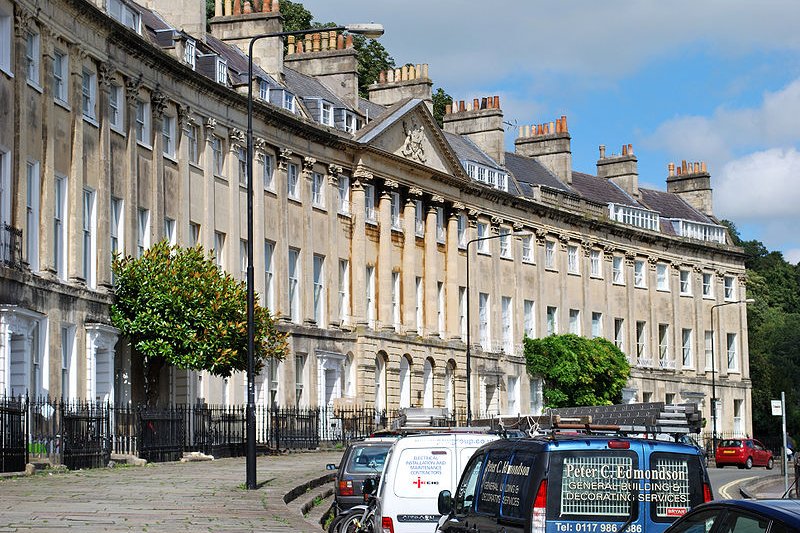 Bath, England: Source: https://commons.wikimedia.org/wiki/File:Aerial.view.of.bath.arp.jpg
Bath, England: Source: https://commons.wikimedia.org/wiki/File:Aerial.view.of.bath.arp.jpgAuthor: Adrian Pingstone

Bath is a city in the county of Somerset in Southwest England. It is located about 160km (100 mi) from London and 21km (13 mi) from Bristol.
Bath is said to have been established by the Romans as a spa resort around AD 43 under the Latin name Aquae Sulis, although the hot springs of that area has been know longer than that. During Roman times, it was known as Aquae Sulis. The Romans built their baths at the only hot springs to be found in the United Kingdom.
A historic significance to Bath is that in AD 973, Edgar was crowned the King of England at the Bath Abbey. The town itself was granted city status by Queen Elizabeth I in 1590. City of Bath was inscribed as a World Heritage Site during the 11th session of the World Heritage Committee held in Paris, France, on 7 - 11 December, 1987. It is a major tourist destination in Britain, drawing close to 4 million visitors every year.
 Pulteney Bridge, Bath: Source: https://commons.wikimedia.org/wiki/File:Pulteney_bridge_in_bath_england_arp.jpg
Pulteney Bridge, Bath: Source: https://commons.wikimedia.org/wiki/File:Pulteney_bridge_in_bath_england_arp.jpgAuthor: Adrian Pingstone

The hot springs at Bath are the only naturally occuring ones in the United Kingdom. It continues to be a popular spa resort during the Georgian era. This was when the heritage buildings of Georgian architecture was built out of Bath Stone. The most famous is the Royal Crescent, also called The Circus, built between 1754 and 1768.
 The Circus in Bath: Source: https://commons.wikimedia.org/wiki/File:Bath_Circus_part_of_north_side.jpg
The Circus in Bath: Source: https://commons.wikimedia.org/wiki/File:Bath_Circus_part_of_north_side.jpgAuthor: NorFromUtrecht

World Heritage Site Inscription Details
Location: N 51 22 53 W 2 21 31 in Somerset, England.Inscription Year: 1987
Type: Cultural
Inscription Criteria: I, II, IV
Going to Bath
By Plane: The nearest airport is the Bristol International Airport, located some 20 miles from Bath. There are public bus services from the airport to the Bristol Temple Meads Station, and from there, take the train to Bath. The whole journey should take an hour outside of rush hour in Bristol, which is from 4:00 pm to 6:00 pm.By Train: There are regular inter-city train services connecting Bath with Bristol, London, Reading, Southampton, and several other cities. The trains from London leave London Paddington station every 30 minutes for the one-hour-30-minute journey.
By Road: Driving to Bath is not encouraged for the uninitiated due to its many one-way streets and lack of a bypass. As a result, the roads tend to get congested with traffic.
 Camden Crescent, Bath: Source: https://commons.wikimedia.org/wiki/File:Camden_Crescent_Bath_2.jpg
Camden Crescent, Bath: Source: https://commons.wikimedia.org/wiki/File:Camden_Crescent_Bath_2.jpgAuthor: NotForUtrecht

Places of Interest in Bath
- 1, Royal Crescent: A restored townhouse offering a glimpse of late 18th century furnishing.
- Bath Abbey: The last Gothic church ion England.
- Building of Bath Museum: Museum showcasing how Bath was built.
- Hershel Museum of Astronomy: An excellent museum for the astronomy enthusiast.
- Museum of East Asian Art: Museum exhibiting art from China, Japan and Southeast Asia.
- Pulteney Bridge: One of only four bridges in the world with shops across its span.
- Roman Baths: The main attraction of Bath, with the only natural mineral hot springs in England.
- Royal Crescent: A stately crescent of houses designed by John Wood.
- Sally Lunn's Refreshment House & Museum: The oldest house in Bath
- Walcot Street: A street to shop for antiques and other bric-bracs at its weekend market.
Bath is  on the Map of cities in England
on the Map of cities in England
 Latest updates on Penang Travel Tips
Latest updates on Penang Travel Tips
Map of Ceremonial Counties of England

Copyright © 2003-2025 Timothy Tye. All Rights Reserved.

 Go Back
Go Back